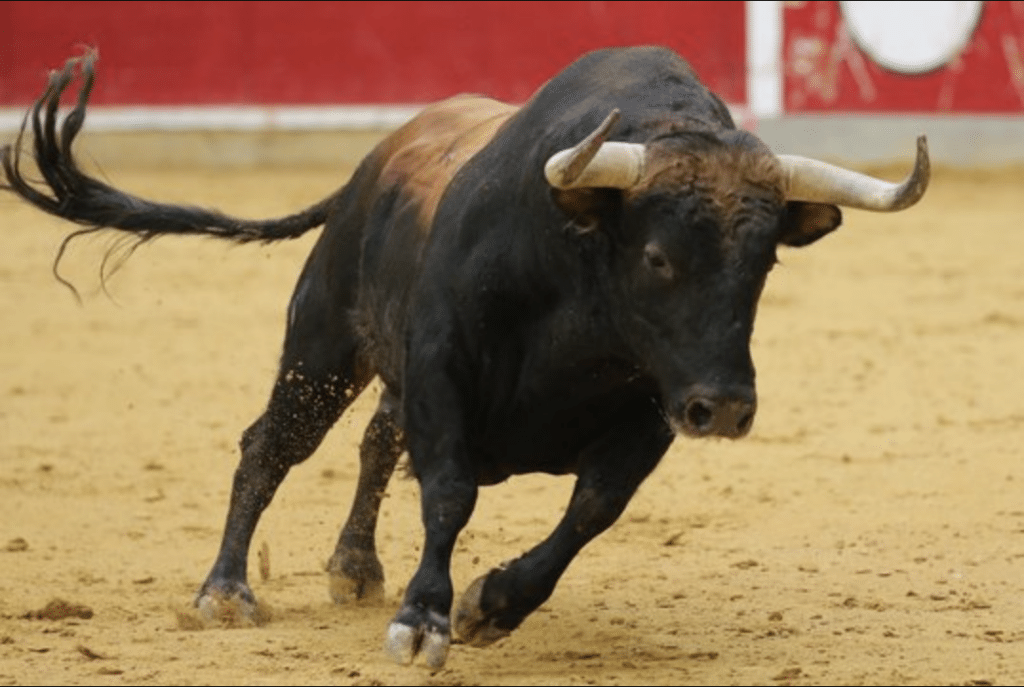In the purest sense, a positive person can be referred to as a “bull” and, as such, they can be “bullish”. The term is most commonly associated with trading in financial markets.
A bull is a market participant that has a positive outlook and believes prices will be moving higher. The term “bull” is also used in association with a market price that is strongly rising. This is known as a “bull market”.

In technical analysis, price trends and patterns that are bullish are seen as positive moves in the price. From a trading perspective, a market participant that is bullish would be looking to buy or prefer to stay long of an instrument to take advantage of a rise in the price.
The opposite of bulls, bullish and bull markets are “bears”, “bearish” and “bear markets”. Bearish traders are hoping to take advantage of an expected fall in the market price.
Origin of the “bull”
“Bulls” and “Bears” have been terms used to describe traders in financial markets since the 1700s. The earliest reference came in The Tatler in 1709:
“I fear the word Bear is hardly to be understood among the polite people; but I take the meaning to be, that one who insures a real value upon an imaginary thing, is said to sell a Bear…”
The “bearskin jobbers” who bought and sold bearskins were known as “bears”. They sold bearskins before the bears had been caught. Subsequently, they wanted the prices to fall so that they could pay a cheaper price on the delivery of the skins.
The origin of the “bull” is less well documented. It is believed that it comes from the way the animals fight. A bull attacks from low and pushes up with its head and horns. Whereas a bear is the opposite, standing tall to then swipe downwards. Bears and bulls were also seen as opponents, including in the historically popular bull and bear fights.
Bull Markets
Bull markets involve the price moving strongly higher. However, strictly speaking, a bull market is not simply a rise in the price of an instrument. In equity markets, a bull market is defined as a 20% increase in the price from a recent key low.
The disclaimers will tell us that prices can go down lower as well as higher. Prices never move in straight lines (at least not for very long). There can be times when prices fall. A “bull market correction” is a period where the market is pulling lower but remains within the bull market. It is a near-term move lower within a longer-term bull market. These are the conditions that longer-term traders and investors look for as an opportunity to buy for the continuation of the bull market.
Bullish market conditions
Several conditions can develop to form a bullish market outlook. These factors can all combine to create a bullish feeling amongst traders:
- Loose monetary policy
- Strong economic growth
- Positive consumer confidence
- Benign geopolitical environment
From a technical analysis perspective, here is a list of common trading set-ups and patterns that are bullish:
- Strong uptrend
- Rising moving averages
- Double Bottom
- Triple Bottom
- Inverse head and shoulders bottom
- Ascending triangle
- Bull flag
- Hammer candlestick pattern
- Inverted Hammer candlestick pattern
- Bullish Engulfing candlestick pattern
- Morning Star candlestick pattern
- Piercing Line candlestick pattern